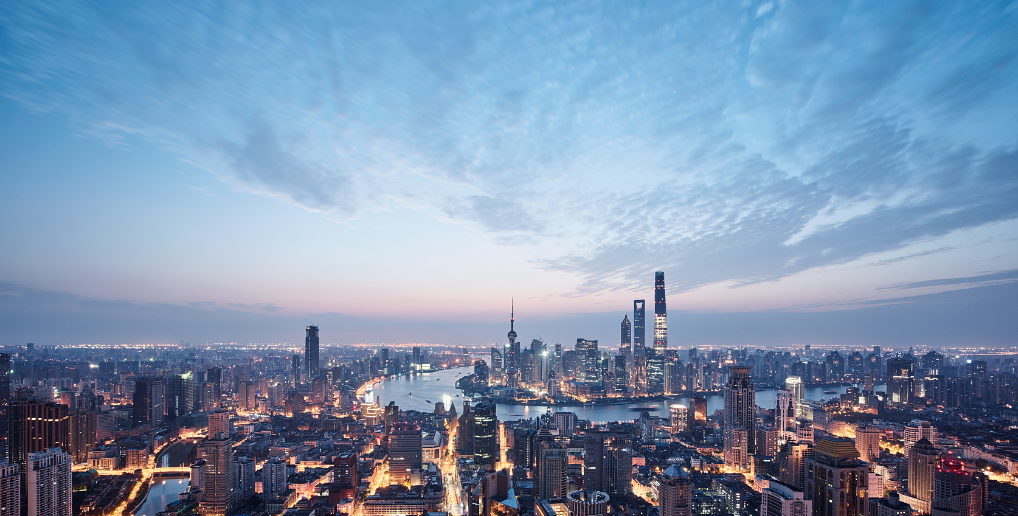New Technology Application and Development Trend of Building Surface (I)
Abstract
The fantastic ideas of architects promote the continuous innovation of curtain wall technology, and also promote the progress of related materials. The continuous emergence of new materials also promotes the innovation and development of curtain wall technology, which complement each other. Intelligent city construction, as the current direction of urban development, will inevitably promote the intellectualization of buildings, and also promote the development of ecological intelligent building curtain walls.
Key words: building curtain wall, new materials, new technology
Foreword
Since its birth, architecture has been presented to human beings in a specific form. Among the many elements that constitute the building, the building skin gives the most direct and profound impression. Architectural skin is the material element that wraps the interior space of a building, the medium that separates the interior and exterior, and the key to shape the expression and style of a building. The specific practice and final form of architectural skin reflect the architectural level and aesthetic tendency in different periods, regions, countries and cultures. In contemporary architectural design, there are many kinds of building skin materials and various combinations, especially the development of modern science and technology, which leads to more and more ingenious use of building materials, and some traditional building skin materials have also gained new life, thus creating unprecedented architectural forms.
Building curtain wall is one of the forms of building envelope. Building curtain wall has been introduced into China since the late 1970s, and has a history of more than 30 years. In this short period of more than 30 years, China has developed into the world's largest producer and user of curtain walls. The annual output and total ownership of curtain walls are the largest in the world. The quality and grade of curtain wall products have also been greatly improved, and the curtain wall technology has also been greatly improved. The development situation of building curtain walls in China in recent years is compelling.
Building curtain wall can be divided into glass curtain wall, metal plate curtain wall, stone curtain wall and artificial panel curtain wall according to its panel material.
It is an important feature of contemporary architecture to use metal sheet as the outer skin of the building. By utilizing the smooth and cold texture of metal materials, architects have created buildings with a futuristic style. There are many kinds of metal plates, such as aluminum plate, stainless steel plate, copper plate, titanium zinc plate and so on. In addition, different processing methods will also make the same material have different effects, such as the whole piece of aluminum plate and perforated aluminum plate. The famous American architect Frank Gehry covered the skin of the Guggenheim Museum of Art in Spain with silver titanium alloy plates, while the skin of the Disney Concert Hall in New York and Los Angeles was covered with silver stainless steel plates.
Stone is one of the earliest materials used in construction, which has relatively good durability. Many ancient buildings in the world use stone as the main building material, and stone is still widely used in today's building environment. Natural stone is characterized with uniform structure, hard texture, wear resistance, beautiful color, and appearance, which can be maintained for more than a hundred years. Because of its unique physical properties and its beautiful patterns, it has become a good building material and a decorative material that many architects and developers prefer to use. In addition to the commonly used granite, marble, cave stone, sandstone, volcanic stone and other natural stones, more and more man-made boards are also used in building facades. such as ceramic plate, porcelain plate, microcrystalline stone plate and the like.
The demand of architectural design promotes the progress of curtain wall technology, and also drives the development and innovation of related panel materials. The emergence of new materials also promotes the development and innovation of building curtain wall. Guangzhou East Tower-CTF Finance Centre, located in the CBD central area of Zhujiang New Town, Tianhe District, Guangzhou, is due to the bold vision of architects, making a technological breakthrough in the glazed ceramic plate of traditional ice pattern technology in China, and is first applied to the 530-meter-high building facade, becoming the highest ceramic plate project in the world.
Different types of curtain walls have different functions due to different use occasions. As one of the building envelope, glass curtain wall has the functions of wind and rain shelter, thermal insulation, sound insulation and noise reduction. It not only embodies the best combination of architecture, aesthetics and structural design, but also perfectly embodies the various functions of glass. With the development of science and technology, high-rise and super high-rise buildings are constantly emerging. In order to reduce the load of the main structure, building curtain wall has become the first choice of building envelope.
1、Application Status of Glass Curtain Wall Materials
Because of the requirements of architectural effect and lighting, glass curtain wall is undoubtedly the most widely used form in building skin. Usually, the use of glass is to give full play to its clear and transparent characteristics, to see the outdoor scenery at a glance, and to create a peripheral protection system for indoor and outdoor communication. With the development of industrial technology, glass can now be transparent, translucent or opaque. Moreover, new technologies, excellent insulation properties and load potential have changed our understanding of glass. With the development of science and technology and the ingenious conception of designers, glass has changed from traditional windows and curtain walls to graceful and ever-changing architectural skin, which not only plays the role of building envelope, but also shows its magnificent decorative effect.
Compared with the traditional wall, the weight of building curtain wall is much lighter, but the energy consumption is very large, so the window and curtain wall of the building are still the weakest link of building envelope energy saving. In China's energy consumption structure, building energy consumption accounts for more than 40% of the total energy consumption, and the energy loss through doors and windows accounts for 51% of the building energy consumption. At present, China has incorporated energy-saving doors and windows into the energy-saving and emission reduction strategy, and formulated the standards of energy-saving doors and windows, in which the role of empty glass spacers is very important. With the improvement of energy-saving requirements, more and more energy-saving materials and technologies will be applied to the building skin.
1.1 Application of insulating glass
Before the emergence of hollow glass, houses mostly used double windows, and then double glass was used until 1865, when the Americans invented hollow glass. With the progress of technology and continuous improvement, the current hollow glass is made of two (or three) pieces of glass, using high-strength and high-tightness composite binder, bonding the glass sheet with the aluminum alloy frame containing desiccant, and making high-performance sound insulation and heat insulation glass. Insulating glass is also called thermal insulation glass because there is a cavity between two layers of glass, which reduces heat conduction and plays a role in thermal insulation. It is a building material with good thermal insulation, sound insulation, beauty and applicability, and can reduce the weight of the building. Insulating glass has been used because its performance is superior to that of ordinary double-layer glass. In order to reduce the heat transfer of gas, hollow glass can also use gases with high molecular weight (such as inert gases: argon, krypton, xenon) instead of air to improve the thermal insulation performance.
1.2 Application of Low-E glass
Low-E is the abbreviation of Low Emissivity, which is a kind of energy-saving glass relative to heat reflective glass.
With the continuous improvement of building performance requirements, when choosing glass doors and windows for buildings, people pay more attention to their thermal control, cooling costs and comfortable balance of internal sunlight projection, in addition to their aesthetic and appearance characteristics. This makes Low-E glass, the upstart in the family of coated glass, stand out and become the focus of attention.
Low-E has excellent thermal properties. The heat loss of external door and window glass is the main part of building energy consumption, accounting for more than 50% of building energy consumption. Relevant research data show that the heat transfer of glass inner surface is mainly radiation, accounting for 58%, which means that the most effective way to reduce the loss of heat energy by changing the performance of glass is to suppress the radiation of its inner surface. The emissivity of common float glass is as high as 0.84, and the E value of off-line single silver Low-E glass can be 0.06, the reflectivity of the low-emissivity film system for far infrared thermal radiation is very high, and more than 80% of far infrared thermal radiation can be reflected back, so that the secondary heat transfer caused by the self-temperature rise is avoided, Therefore, Low-E glass has a very low heat transfer coefficient and has a good effect of blocking thermal radiation. Building doors and windows made of Low-E glass can greatly reduce the transfer of outdoor heat energy caused by radiation to the interior in summer, and can also reduce indoor heat transfer and increase heating energy consumption in winter, achieving ideal energy-saving effects.
There are currently two types of Low-E glass: online Low-E glass and offline Low-E glass. Online LOW-E glass has a single variety, while offline Low-E glass has a variety of varieties. According to different climate characteristics, it can produce high, medium and low transmittance products, and the colors are silver gray, light gray, light blue and colorless transparent. Colored glass can also be used to produce green and other colors.
Low-E glass is divided into single silver Low-E glass, double silver Low-E glass and three silver Low-E glasses. Any coated glass, while limiting the transmission of solar thermal radiation, will limit the transmission of visible light to varying degrees. Double-silver Low-E glass can block more solar heat radiation heat energy than single-silver Low-E glass. In other words, in the case of the same transmittance, the double silver Low-E has a lower shading coefficient Sc, which can filter sunlight into cold light sources to a greater extent.
The heat transfer coefficient of double-silver Low-E glass is lower than that of single-silver Low-E glass, which can further improve the thermal insulation performance of external windows and truly achieve warm in winter and cool in summer. Simply put, because the double-silver Low-E glass greatly reduces the heat exchange between the indoor and outdoor environment through the glass, when the air conditioner is heating or cooling, after the indoor temperature reaches the set temperature, the air conditioner can be in a standby state for a longer time, thus saving power consumption.
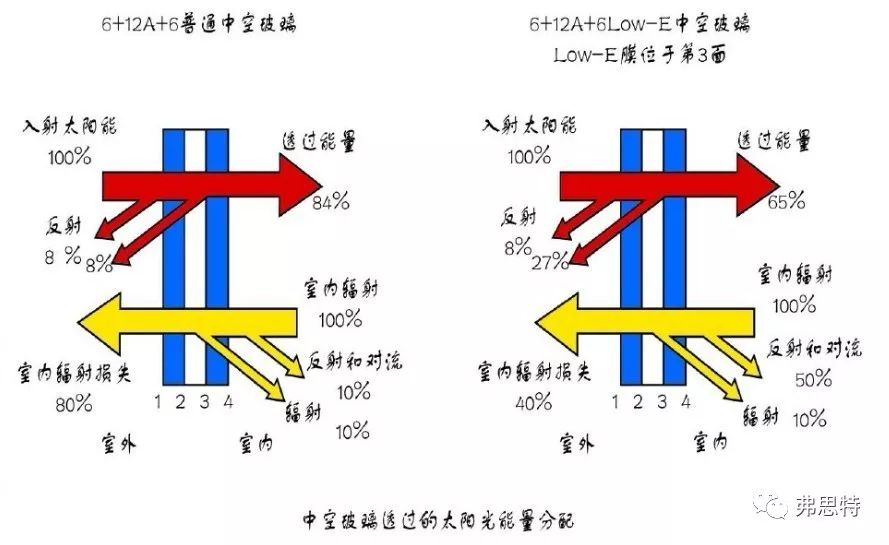
▲ Solar energy distribution through insulating glass
Advantages of Double Silver Low-E Glass:
1) Under the same glass combination, double silver LOW-E glass has lower emissivity and lower heat transfer coefficient (U value) than single silver LOW-E glass.
2) Double-silver Low-E glass has a lower shading coefficient (Sc value).
3) Under the same shading coefficient (Sc value), the visible light transmittance is higher than that of single silver Low-E. In a word, double-silver Low-E glass highlights the shielding effect of glass on solar thermal radiation, skillfully combines the high transmittance of glass with the low transmittance of solar thermal radiation, and successfully solves the problem of coexistence of the dual advantages of high transmittance and low U and Sc values, so it has better energy-saving effect, which is an advantage that any other glass can not have.
At present, Low-E hollow glass is widely used in building curtain walls. Although the application of aluminum spacer makes the modern production of insulating glass possible, it also has an unavoidable disadvantage, that is, poor thermal insulation performance. The poor thermal insulation performance of spacer is an important reason for the failure of insulating glass and condensation or mildew on the inner surface. Because of the strong thermal conductivity of the aluminum spacer, the temperature of the inner surface of the hollow glass is lower than that of the central part of the hollow glass, which not only increases the cooling load in summer and the heat loss in winter, but also forms a small range of air convection in front of the window, reduces the indoor comfort, and forms condensation on the inner surface of the glass in serious cases. However, the condensation for a long time will cause the failure of insulating glass.
1.3 Breathing curtain wall
The breathing type curtain wall is composed of an inner glass curtain wall and an outer glass curtain wall. Compared with the traditional curtain wall, the breathing type curtain wall is characterized in that a ventilation and air exchange layer is formed between the inner and outer glass curtain walls, and due to the circulation or circulation of air in the air exchange layer, the temperature of the inner layer of the curtain wall is close to the indoor temperature, so that the temperature difference is reduced, and the energy is saved by 42% -52% compared with the traditional curtain wall during heating; And that energy is save by 38 to 60% during refrigeration. In addition, due to the use of double-layer curtain wall, the sound insulation effect of the whole curtain wall has been greatly improved. Breathing curtain wall is divided into two types: external circulation type and internal circulation type. At present, external circulation type curtain wall is widely used in China.
China's first ultra-low energy consumption demonstration building was completed and opened to the public in Tsinghua University in 2005. The building is located in the east of Tsinghua campus. Its south facade adopts double-layer breathing curtain wall, and the inner curtain wall adopts high-performance glass curtain wall with vacuum glass composite hollow structure. The heat consumption at night in winter is reduced by 83% compared with single white glass, 70% compared with ordinary insulating glass, and 37% compared with off-line Low-E insulating glass. It can be seen that the high performance vacuum glass has excellent thermal performance and obvious energy-saving effect.
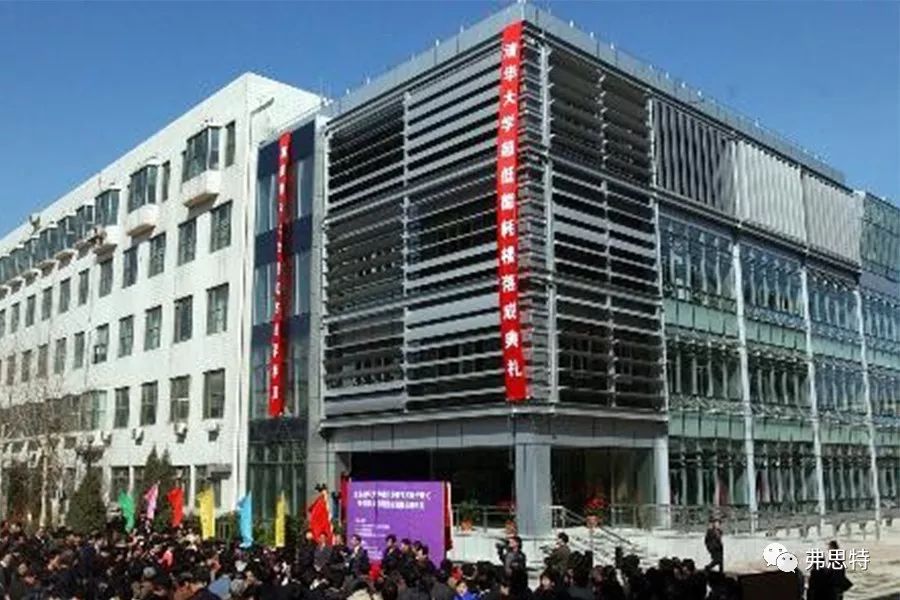
▲ Beijing Tsinghua University Ultra-low Energy Consumption Demonstration Building
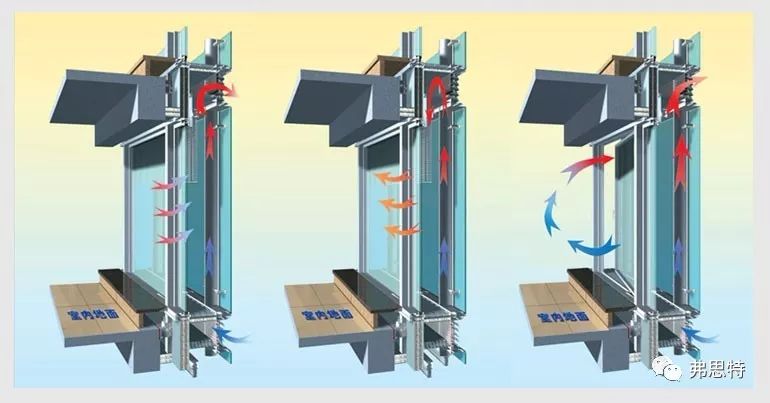
▲ Working principle of breathing curtain wall
2. Application of New Technology in Glass Curtain Wall
2.1 Insulating glass warm edge technology
Since 2015, some areas have fully implemented the design standards of 75% energy saving for residential buildings and 65% energy saving for public buildings. From the point of view of energy saving, about 50% of the energy loss of the whole building is lost from doors and windows. For the whole building, the area of doors and windows accounts for more than 20% of the building area, and glass accounts for more than 70% of windows and doors. Therefore, enhancing the thermal insulation performance of doors and windows and reducing the energy consumption of windows and doors are important links to improve indoor thermal environment and improve building energy saving. Among them, the reduction of energy loss through glass has been paid more and more attention. Therefore, in order to reduce the energy consumption of building doors and windows, the key is to develop a new type of insulating glass edge partition sealing material. The performance of the partition system directly determines the energy saving and service life of insulating glass.
In order to solve the problem of heat loss at the edge of insulating glass, the warm edge spacer came into being. What is a warm edge? In short, it is the warm edge spacer that forms a broken bridge inside the hollow glass. Warm-edge insulating glass is compared with the traditional aluminum spacer insulating glass, which is clearly defined as thermally improved spacer in ISO10077, and the thermal conductivity factor ∑(d × λ) is less than 0.007 W/K in the standard. Generally speaking, the spacer made of non-metal materials or non-metal and thin metal can basically meet the requirements of the standard, so it can be called the warm side insulating glass spacer; while the calculation result of the aluminum alloy spacer system is 0.1120 W/K, which is far greater than 0.007 W/K, so it is defined as the cold side system.
The visible advantage of warm edge technology is anti-condensation. Compared with the traditional hollow glass with aluminum alloy spacer, the hollow glass with warm edge spacer has better anti-condensation and thermal insulation functions. At present, there are basically two types of insulating glass warm edge systems: one is the rigid spacer composed of metal frame with low thermal conductivity and sealant, such as GTI stainless steel warm edge spacer system of Technoform Wind; the other is the non-rigid spacer made of polymer materials, such as thermoplastic spacer sealing system (TPS).
Dewing does not only occur in cold regions. The principle of condensation: humidity, saturation, dew point. If these three elements are met, condensation will also occur in the southern region. For example, in the winter of 2017, extreme low temperatures occurred in Jiangsu, Zhejiang and Shanghai, and condensation occurred in many residential windows.
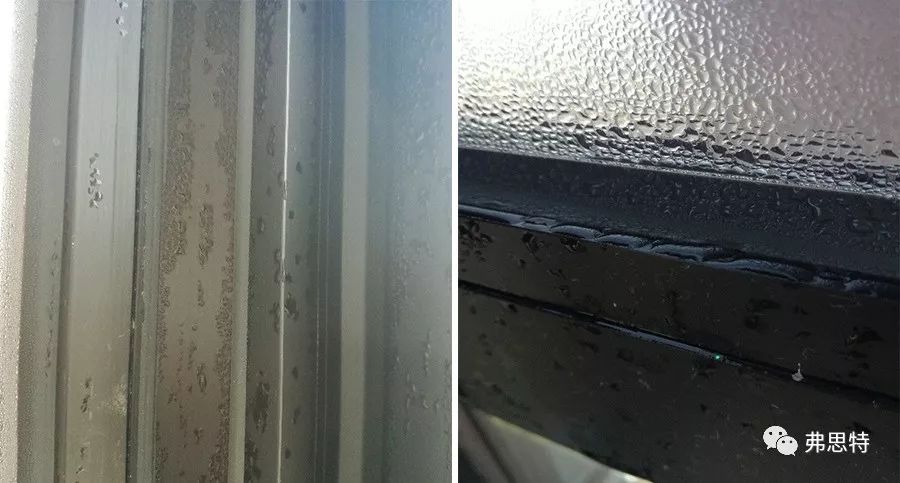
▲ Condensation of ordinary insulating glass
The effective way to prevent condensation at the edge of glass is to increase the temperature of the inner surface of glass. In the energy-saving design of buildings, ordinary insulating glass was used at first, followed by Low-E insulating glass, and now it is the development of warm edge technology. High-grade architectural glass components adopt the method of filling inert gas in Low-E hollow glass and warm edge technology to improve thermal performance, which is very common in developed countries. However, it is more difficult to promote in China, mainly because of the cost problem.
For insulating glass, warm edge technology has become an industrial vocabulary. After decades of development, the structure of insulating glass is basically similar, but with the development of material science, the physical and chemical properties of glass have been greatly improved. The combined application of coated glass and various polymer materials makes the thermal insulation performance of insulating glass change greatly, which can meet the needs of different occasions. Developed countries can design various types of insulating glass according to specific use requirements, and constantly develop new varieties of warm edge spacers. The Ministry of Construction of China has also listed insulating glass as one of the energy-saving building materials products for popularization and application, which makes the development and production of insulating glass in China face a good development opportunity.
The insulating ability of insulating glass mainly comes from the sealed air layer. At a temperature of 20℃, the thermal conductivity of air is 0.026 W/m•K, while the thermal conductivity of ordinary transparent glass is 0.76 W/m•K. At the edge of the insulating glass, because the sealing system is in close contact with the glass plate, it is the conduction heat transfer between the multi-layer flat walls. The thermal conductivity of the spacer material has a great influence on the thermal resistance. The aluminum spacer used initially has a large thermal conductivity and a small thermal resistance. The thermal conductivity of pure aluminum is 202 W/m•K, and the thermal conductivity of aluminum alloy is generally 130 ~ 150 W/m•K. Therefore, the thermal resistance of the side portion is much smaller than that of the middle portion.
The material with low thermal conductivity is used to replace the traditional aluminum spacer, which can make the temperature around the inner glass higher than in the past and avoid condensation at the edge of the inner glass. Because the thermal conductivity of stainless steel is much lower than that of aluminum, the ratio of the thermal conductivity of the stainless steel material to the aluminum spacer is 1:11, so that the condition that the thermal resistance at the edge of the insulating glass is too small can be improved. Technoform's TGI warm-edge spacers are an alternative to aluminum spacers and are co-extruded from high-strength polypropylene (PP) and stainless steel (SS) using a thermoplastic extrusion process.
Aluminum spacer and stainless steel spacer are rigid spacers composed of metal frame with low thermal conductivity and sealant, and there is also a non-rigid spacer made of polymer materials. Because of the low thermal conductivity of polymer materials, the use of thermosetting materials as spacers has been greatly developed.
Thermoplastic spacer TPS is a new type of insulating glass warm edge system, which is a thermoplastic spacer filled with molecular sieve with special butyl rubber as auxiliary material. It can perfectly replace the traditional hollow aluminum strip. TPS is a very mature product, and it is also the best energy-saving insulating glass heating system in the world. The thermal conductivity of the thermoplastic warm edge spacer is only 0.168 W/m2•K, which is 1/950 of that of the aluminum spacer and 1/85 of that of the stainless steel spacer. Compared with aluminum hollow glass, the hollow glass made of thermoplastic warm edge spacer has higher edge temperature, which greatly improves the condensation resistance of hollow glass, and is the most advanced green energy-saving hollow glass system at present.
2.2 Application of vacuum glass
The vacuum glass is formed by sealing the periphery of two pieces of flat glass, vacuumizing the gap between the two pieces of flat glass, and sealing the exhaust hole, wherein the gap between the two pieces of glass is 0.1-0.2mm, and at least one of the two sheets of glass of the vacuum glass is low-emissivity glass, so that the heat dissipated through conduction, convection and radiation of the vacuum glass can be minimized. Vacuum glass also has a better function of sound insulation, because the vacuum layer can not conduct noise, so vacuum glass can isolate 90% of the noise.
Standard vacuum glass (4+0.3V+4mm) has a K value of 0.48 W/m2•K, which is much lower than insulating glass, and has the following advantages:
1) Due to the high thermal resistance, the anti-dew and anti-frost performance is better.
2) Due to vacuum interval, the sound insulation performance is good, the problem of internal fogging and condensation existing in the hollow glass does not exist, and the problem of expansion and cracking of the hollow glass transported to the plateau low pressure area does not exist;
3) Since the two pieces of glass form a rigid connection, the wind pressure strength is higher than that of the hollow glass composed of glass with the same thickness. For example, the wind pressure strength of vacuum glass composed of 4mm glass is higher than that of 8mm thick glass, which is more than one and a half times that of hollow glass composed of two pieces of 4mm glass.
The promulgation and implementation of the Design Standard for Energy Efficiency of Public Buildings (GB50189-2015) has aroused widespread concern in the industry, and the new building energy efficiency standard has put forward clear requirements for the application of energy-saving glass. The area ratio of window to wall in modern buildings is getting larger and larger. People hope that public buildings will be more transparent and bright, and the building facade will be more beautiful and rich in form. If the whole building adopts transparent curtain wall, it needs to adopt high-performance energy-saving curtain wall. Vacuum glass curtain wall or double-layer vacuum glass curtain wall is a high-performance energy-saving glass curtain wall that can not only meet the energy-saving standards, but also meet the transparent and bright requirements.
Located at the northeast corner of Dongzhimen Overpass, Dongcheng District, Beijing, Tianheng Building is the world's first vacuum glass high energy-saving Grade A office building, with a total floor area of 572.38 million square meters, 4 floors underground and 22 floors above ground. The building adopts semi-hidden frame vacuum glass curtain wall, 7000 square meters, and more than 2500 square meters of vacuum glass aluminum alloy heat insulation windows.
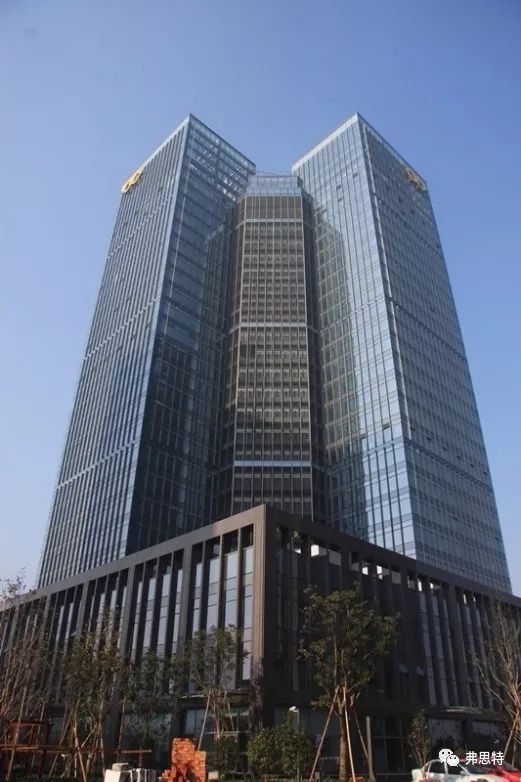
▲ Beijing Tianheng Building
The vacuum glass of the building adopts a vacuum combined hollow structure. According to the test of the National Construction Engineering Quality Inspection Center, its heat transfer coefficient K=1.2W/m2K, which meets and exceeds the highest level 10 of the national standard for thermal insulation windows. The weighted sound insulation of the vacuum glass Rw = 36 decibels, which meets the national standard for sound insulation level 4. The building uses vacuum glass as a whole, and the single cost is only increased by 10% -15%.
2.3 Multifunctional curtain wall
In addition to the application of energy-saving products, various new materials are also used in buildings with curtain walls as carriers. It adds a new function to the building.
2.3.1 Photovoltaic curtain wall: Building Integrated Photovoltaic (BIPV) technology is a technology that integrates solar power generation (photovoltaic) products into buildings. BIPV is Building Integrated Photovoltaic, which not only has the function of external envelope, but also can generate electricity for building use. Photovoltaic cell components (such as monocrystalline silicon or polycrystalline silicon) are embedded in two pieces of glass and highly transparent resin to make curtain wall glass plates, which are actually solar photovoltaic curtain wall glass. The photovoltaic curtain wall fully reflects the energy-saving and humanization characteristics of the building.
At present, the largest solar photovoltaic system in China is installed on the photovoltaic glass curtain wall of Wuxi Shangneng R&D Building and Recreation Center. With a total area of 23,235㎡, it is a new type of building curtain wall integrating power generation, sound insulation, heat insulation, safety and decoration functions, representing the latest development direction of building photovoltaic integration in the world.
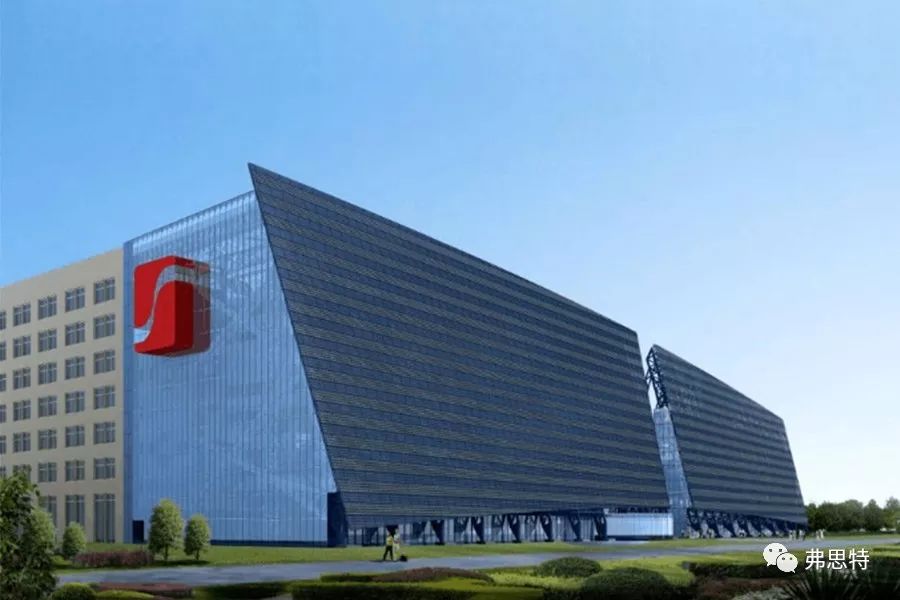
▲ Wuxi Shangneng R&D Building
2.3.2 LED media curtain wall: In modern urban society, LED media curtain wall has become an important display window of urban art, displaying various artistic and advertising information of the city every day, and creating a new urban landscape combining science and art for modern cities.
LED media wall is a creative perspective of art design based on LED material display technology, multimedia technology and facade image, together with design elements such as sound and image, to form a new curtain wall art form. Most of them display dynamic video and picture content through dynamic screens such as glass curtain walls and LED display screens, bringing people a different experience from the past. In recent years, with the improvement of the world economy and the development of cities, the art form of media curtain wall in modern cities has become more and more popular among citizens.
More and more advanced multimedia equipment and advanced technology appear, and through the transformation of LED media building curtain wall into a tool to beautify the urban environment, improve the artistic atmosphere of the city, and shape the urban space art, it brings people a novel visual form. For example, the giant LED screens of Aurora Tower and Citibank in Pudong, Shanghai, not only bring people visual enjoyment, but also produce huge economic benefits.
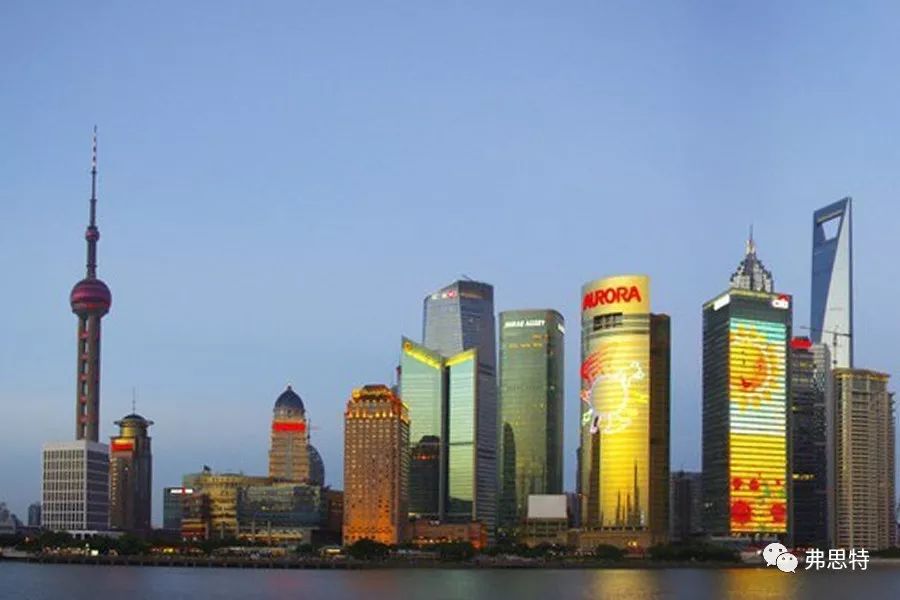
▲ Shanghai Pudong-Aurora Plaza, Citibank LED
The project of Changchun International Financial Center, with COX Architectural Design Firm of Australia as the foreign design company and Philip Cox himself as the chief designer, creatively puts forward the concept of cultural architecture. On the facade curtain wall of the main building, the calligraphy works of Shu Tong, a calligrapher, are displayed on the facade of the building by using LEDs, thus realizing the organic combination of culture and architecture.
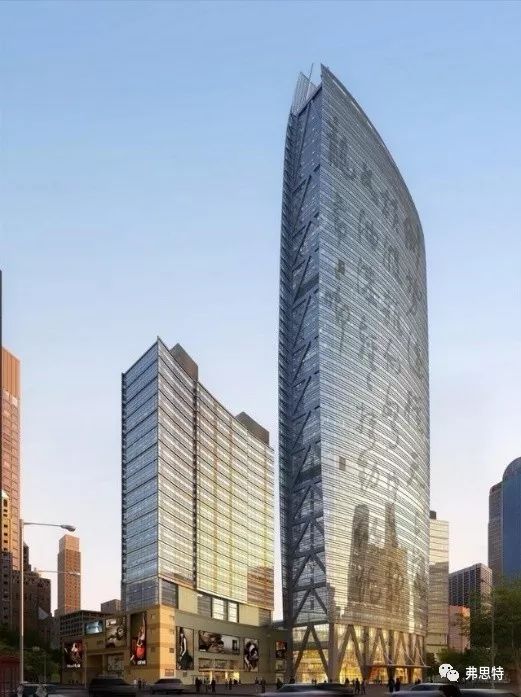
▲ Changchun International Finance Center
Due to the large ratio of window to wall, the limit value of heat transfer coefficient of glass curtain wall is 1.8 W/m2•K. The structural design of glass curtain wall adopts 22mm PA66GF25 thermal insulation strip, laminated insulating glass and warm edge insulating glass spacer. The overall heat transfer coefficient of glass curtain wall reaches 1.78 W/m2•K, which meets the requirements of the specification.

In the above, the two themes of the application and development trend of the new technology of building skin are "the application status of glass curtain wall materials" and "the application of new technology in glass curtain wall".








